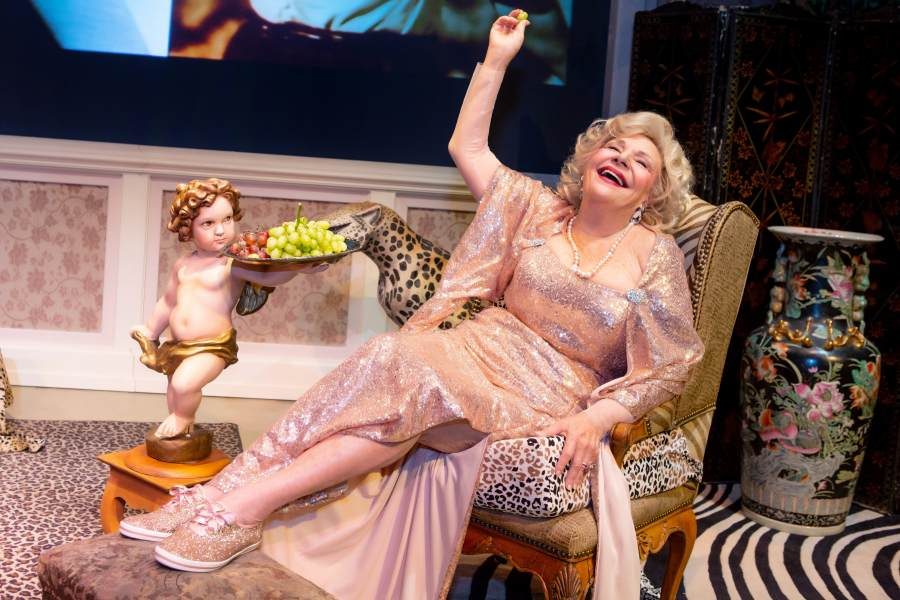

My Life on a Diet, starring Renée Taylor (now at the Theatre at St. Clement’s), is also the name of a book by Taylor, published in 1986. The stage version has been around for a while too. Her husband and writing partner Joseph Bologna, who passed away last year, co-wrote it with her, and directed it.
The comedic one-hander should really be called My Life on Diets, as the veteran performer never stuck with a single weight-reduction regimen. Throughout the 90-minute, intermission-less show, Taylor describes a dozen or so dietary programs, ranging from the famous/infamous (the Scarsdale and Southampton diets) to the somewhat more obscure (the Lord Byron diet) to the likely apocryphal (the Long Island Hadassah Diet). But while it serves as a running joke, obsessive dieting is also the show’s major dramatic conflict. Taylor’s struggle with her weight is no fiction. She tells about being a schoolgirl who was kicked out of an acting academy at 16 because her weight “sabotaged” a production of Romeo and Juliet in which she was the leading lady.
But the show is about much more than Taylor’s attempts to get and stay thin. It covers her childhood (as Renée Wexler) and her early years in show business, up to the time she met and married Bologna. (A few minutes near the end of the show highlight her later, celebrated turn as Fran Drescher’s food-obsessed mother on TV’s The Nanny). Taylor’s father was a failed movie cowboy who had a gambling problem that sometimes left the family in desperate straits. Her mother was an amiable noodge, who insisted on being on a first-name basis with everybody from Joan Crawford to Jesus Christ. It was Mom who insisted that Renée was destined to be a star. And once she discovered applause, Taylor got with the program.
She started out playing small film roles, invariably portraying hookers, in a series of cinematic projects (Cop Hater, Street of Sinners) for which the term “B picture” would have been a generous assessment. But she also got serious about the art of acting. She studied with Lee Strasberg, at whose studio she met and befriended Marilyn Monroe. Some of the evening’s most touching moments focus on her interactions with that sweet, sad star. There are also remembrances of an array of other celebrities, including Jimmy Durante, Tennessee Williams, Grace Kelly, Barbra Streisand, and Marlon Brando.
The format for the show is fairly basic. Taylor walks onto Harry Feiner’s whimsical set (with its kitschy-glam animal-skin décor) and speaks to the audience for a few minutes before settling in behind a desk, where she stays for the remainder of the performance. She tells the audience she will “read” her memoirs—and, indeed, she has notes to which, at rare moments, she discreetly refers. But she is fully engaged with the material, and it’s as though she’s holding forth in her own living room, reliving her past for close friends. Her comic timing is, unsurprisingly, that of a seasoned-pro, both as writer and performer. Above her on the stage is a screen on which photos from her past flash by, along with a few video clips (a scene from the movie The Errand Boy, opposite Jerry Lewis; an appearance with Bologna on Dinah Shore’s TV program). The slide show becomes a second character at points—and a foil of sorts—as when she gives an old photo of a buff, shirtless Brando the once-over.
It may not be to everyone’s taste. But the audience at the performance I saw ate it all up as if it were a scrumptious confection topped with whipped cream and a cherry—calorie counting be damned.